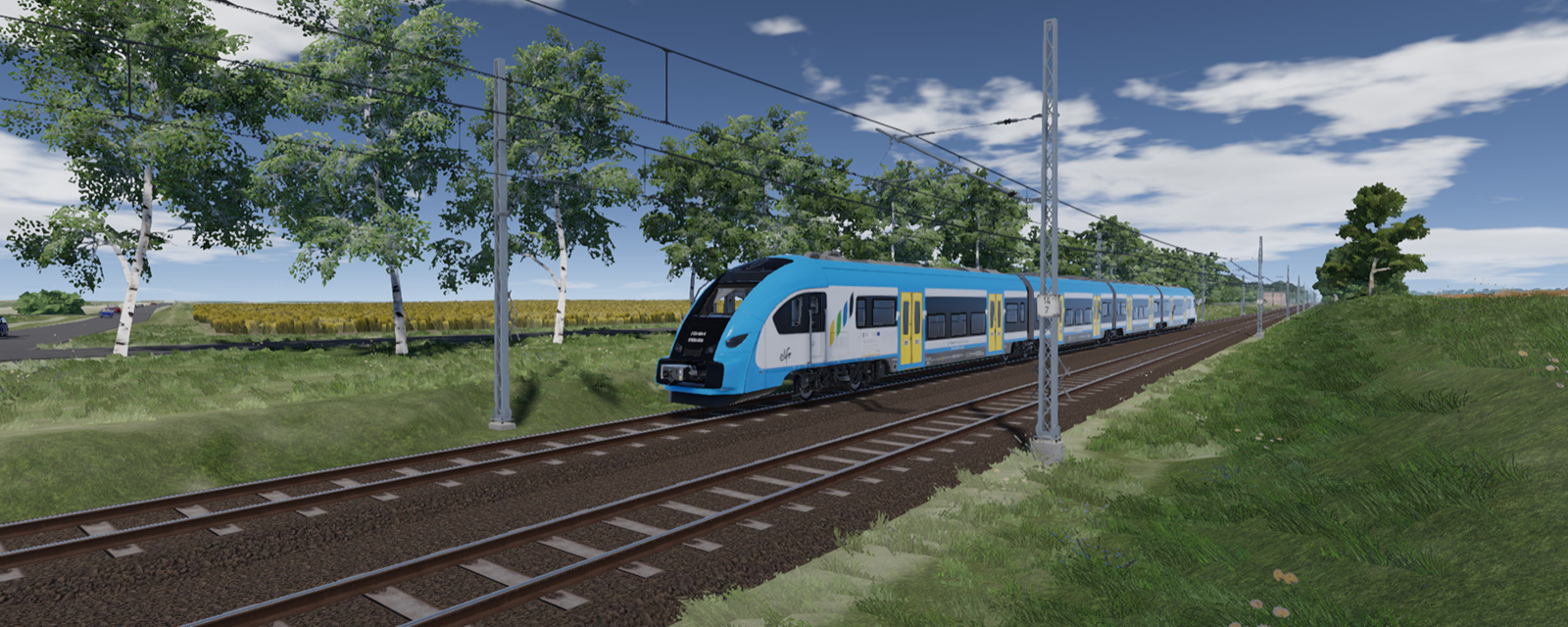

Simulation software by SIM FACTOR contains a database of virtually rendered railway sections (together with terminal stations) on PKP PLK S.A. network the total length of which exceeds 1500 km, with at least 80 km of railways with level 2 ETCS.
Our database also include over 700 km of railway network of Lithuania.
The rendering makes it possible to travel each route in both direction with the possibility to drive on the following tracks:
- plain lines of rendered railway lines;
- all the lines of the main railway operating points which the rendered railway lines.
The following infrastructure elements are rectreated very precisely:
- horizontal and vertical tracks layout (preserving original curvatures, profile gradients and corners, which have an impact on driving dynamics and visibility);
- track superstructure (preserving the accuracy which enables visual observation of the course laid out);
- intersections between the track and roads, pedestrian crossings, employee-only passages;
- civil engineering structures (tunnels, bridges, flyovers, viaducts, large culverts, pedestrian crossings under the railway, footbridges, retaining walls);
- platforms, ramps, freight yards;
- railway buildings (e.g. stations, signal boxes, level crossing gatehouses, non-traction electrical power equipment);
- traction electrical power equipment;
- fixed and portable railway signs and railway signals (e.g. semaphores, colour-light signals, repeaters, warning signals, level crossing warning signals, shunting signals, barraging signals) to the extent compliant with Signalling Instructions Ie-1 (E-1);
- signals related to radio-telephone communication, e.g. W28 (channel change in analogue communication), W29 (connection), signal of radio system change (analogue to digital and vice versa);
- wheel and line side detectors (SHP, SSP, ETCS, DSAT, etc.);
- marking the place of works on the adjacent track.
Simulation also includes movable elements: other railway vehicles, road vehicles, airplanes, cyclists and pedestrians as well as animals. Physics and randomness of movement of the elements listed above is close to natural, which is important in particular when practising atypical situations (e.g. man on tracks, entry of a vehicle on level crossing, animal on tracks).






